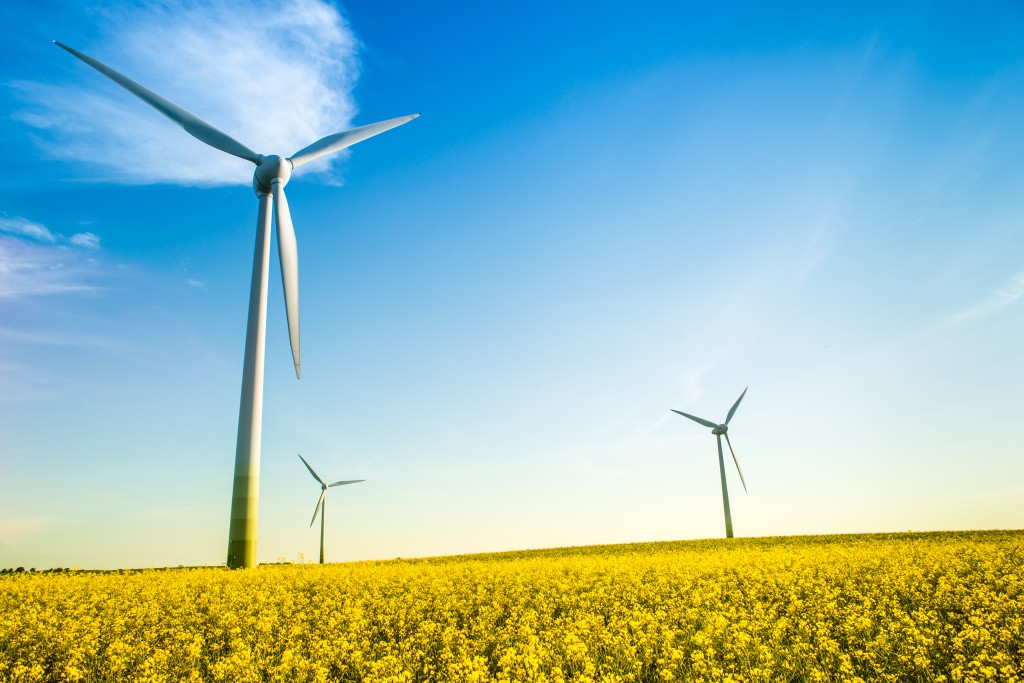Renewable energy is a global movement that is picking up steam faster than ever before. In 2020 alone, the world added an unprecedented 260 gigawatts (GW) of renewable energy capacity. This marks an increase of 50% compared to the previous year and brings the total global renewable energy capacity to over 2,799 GW*.
Why is renewable energy soaring to new heights? The increasing climate change impacts, growing energy demand and the declining costs of renewable technologies have made renewable energy a very attractive option. In addition, major economies have recognised the urgency of reducing greenhouse gas emissions and are taking steps to transition away from a fossil-fuel based energy system to an energy-efficient, renewable-based economy for a more resilient and sustainable energy future. Countries such as China and the United States have set ambitious targets for reducing their carbon emissions and increasing their use of renewable energy. For instance, China is investing heavily in renewable energy, with a target of installing 1,200 GW of non-fossil fuel power generation capacity by 2030, including 1,000 GW of wind and solar power.
Many multinationals are emerging as climate champions committing to reaching net zero carbon emissions by 2030 including Microsoft, Google, Amazon, and PwC. Cutting greenhouse emissions to zero means transitioning to carbon-free energy all year round, 24/7.
What Is Carbon-Free Energy?
Carbon-Free Energy (CFE) refers to any type of energy source that does not produce carbon emissions or other greenhouse gases during its generation or consumption. This includes renewable energy such as solar, wind, geothermal, hydroelectricity, etc. These energy sources do not emit carbon dioxide or other harmful gases during operation, which makes them a vital component of efforts to reduce greenhouse gas emissions. CFE is pivotal in addressing climate change, as carbon dioxide emissions from burning fossil fuels are a major contributor to global warming.
The Challenges of Transitioning to 24/7 Carbon-Free Energy
Although renewable energy is gaining popularity and more people are starting to use it, it cannot be claimed that one is using renewable energy 24/7. Renewable energy sources, such as solar and wind, are naturally intermittent and vary depending on weather conditions. As a result, pure renewable energy supply may be insufficient to meet demand during some periods, which will require to be physically supplemented with conventional energy sources that emit greenhouse gas. Although the total amount of renewable energy generated over a year may equal the total amount consumed, it is during these “gap periods” that we will still require non-renewable energy that will prevent transitioning to.
24/7 Carbon-Free Energy addresses this key problem. 24/7 Carbon-Free Energy means that every kilowatt-hour of electricity consumption is met with carbon-free electricity sources, everywhere, every hour of the day, 365 days a year. A key benefit of 24/7 CFE is that it can provide a reliable and sustainable energy supply throughout the whole period without the need for fossil fuel during “gap periods” when there may be no sun shining or wind blowing. Ultimately, this will have to change to be able to reach clean energy supplies that can satisfy 100% of the network demand. Although challenging, it is achievable with sizable and global efforts across the political and business sectors, combined with technological innovations.
24/7 Carbon-Free Energy Technology Is Within Reach
As the world is facing a pressing need for sustainable and clean energy sources, it is reassuring to know that the technology for 24/7 CFE is already available. With the advancement in renewable energy, battery storage, and smart grid technology, generating, storing and distributing energy without carbon emissions is now possible.
Battery storage solutions, for instance, plays a crucial role in capturing and storing excess renewable energy, allowing for its use during periods of low generation. This ensures a continuous supply of carbon-free energy even when renewable sources are not actively producing. Additionally, smart grid technology enables efficient management and distribution of electricity, optimising the use of renewable energy sources and minimising wastage.
These technologies have already been implemented in different parts of the world and have shown promising results. As a sustainability-focused business, CLP Smart Energy Connect is committed to using digital technology to support decarbonisation of our community. Our upcoming article will delve deeper into how 24/7 hourly matching can assist businesses in advancing their decarbonisation journey. Stay tuned to discover how your organisation can embrace the energy transition and contribute to a more sustainable future.





